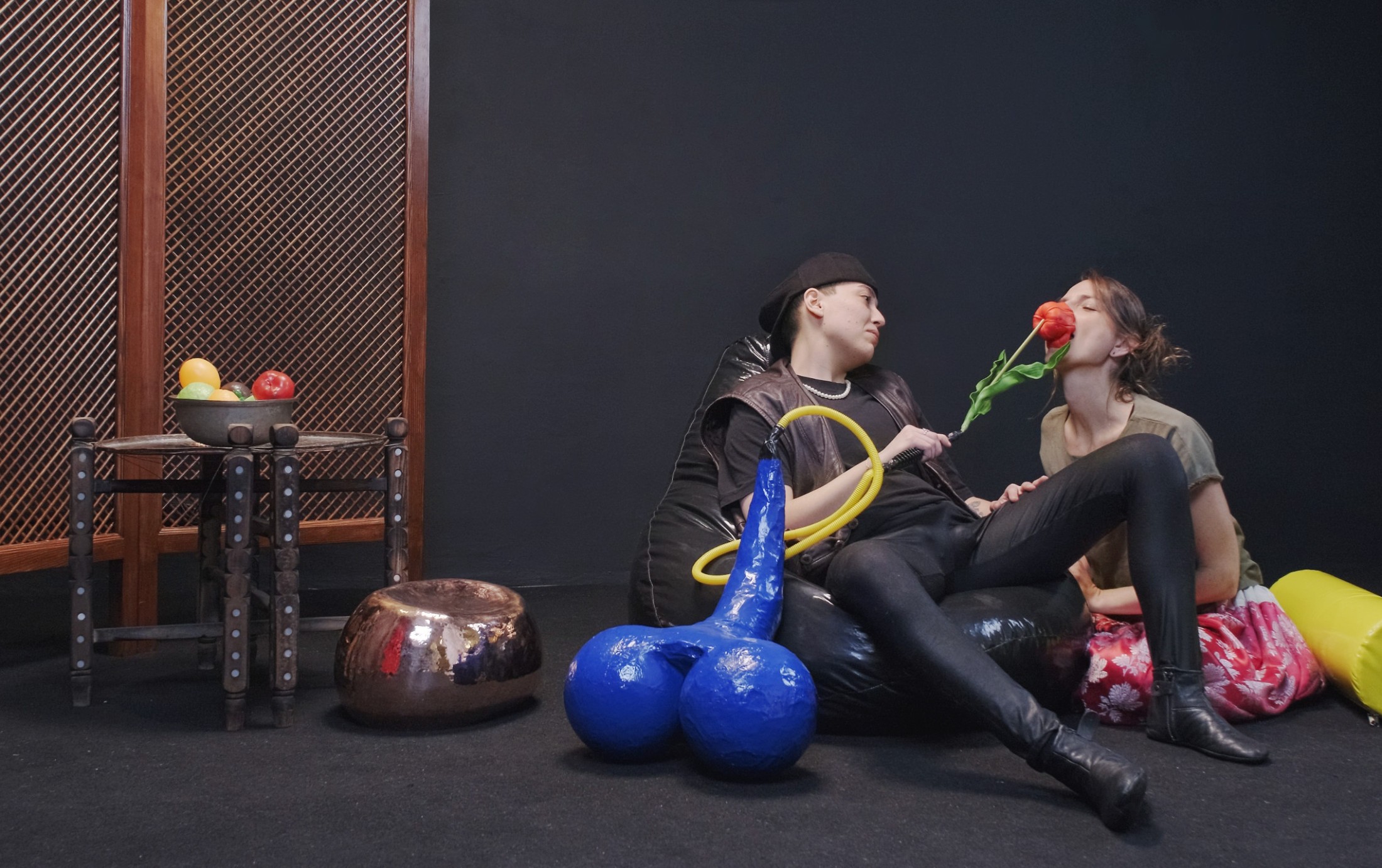İz Öztat
Es
The artist’s novel and installation titled Es tells intimate stories driven by published materials that affect bodies. Es takes place in between artificially drawn lines and transgresses borders. Spanning over a century, Es unfolds in various temporal registers of continuities, ruptures, haunting returns, vicious cycles and urgencies. In Es, nobody speaks to one another in their mother tongue. Es is made up of selves that are plural because they have been dispossessed, displaced and reinvented; because they have doppelgangers, ghosts, alter egos, souls that have been traded in Faustian bargains. Es unfolds through the perspective of an implicated subject, while it folds the audience into the narrative to reflect on their own responsibility. Es takes shape with imaginative acts of organizing, in which published materials are the agents that lead the story. Es finds its visual expression in dialogue with self-publishing, craft traditions and BDSM practices. Es suggests a language coded in geometric abstraction to overcome suppression and censorship. By working in the realm of fantasy and fiction, Es attempts to imagine beyond what is rendered impossible and absent by state violence.
Es is informed by dissident publishing practices of diasporic communities resulting from waves of migration caused by state violence. Instead of an exhaustive survey, the research is focused on publications that propose an acute critique of oppression, as well as suggesting imaginative horizons for emancipatory organizing. The research process is driven by the relationships developed with the materiality, content, form and circulation of the publications and the communities created by them.
In her collective and individual artistic practice spanning diverse media defined by her research, İz Öztat explores the persistence of violent histories through forms, materials, space and language. She responds to absences in official historiography through spectral, intergenerational and speculative fictions. İz Öztat fabricates the (auto)biography of Zişan (1894-1970), who appears to her as a historical figure, a ghost, and an alter ego. She takes on Zişan’s archives and interprets them through her practice to construct a complex temporality of action that enables the suppressed past to intervene in the increasingly authoritarian present. The values and methodologies driving her practice have been articulated in relation to struggles against the taming of running waters and have been informed by consensual negotiation of power dynamics.
Selected exhibitions include Self-determination: A Global Perspective, IMMA, Dublin (2023); The Colony, Schwules Museum, Berlin (2018); Tamawuj, Sharjah Biennial 13 (2017); Land without Land, Heidelberger Kunstverein, (2016); Salt Water: A Theory on Thought Forms, 14th Istanbul Biennial (2015). Her academic articles, essays and fictional texts have been published in various media. She has been dedicated to expanding the discursive potential of art by being part of artistic research processes in self-organized, academic and institutional settings. Öztat participated in artist residency programs in Amman, Berlin, Dublin, London, Istanbul, Madrid, Mexico City, Oslo, Paris and Yerevan.
